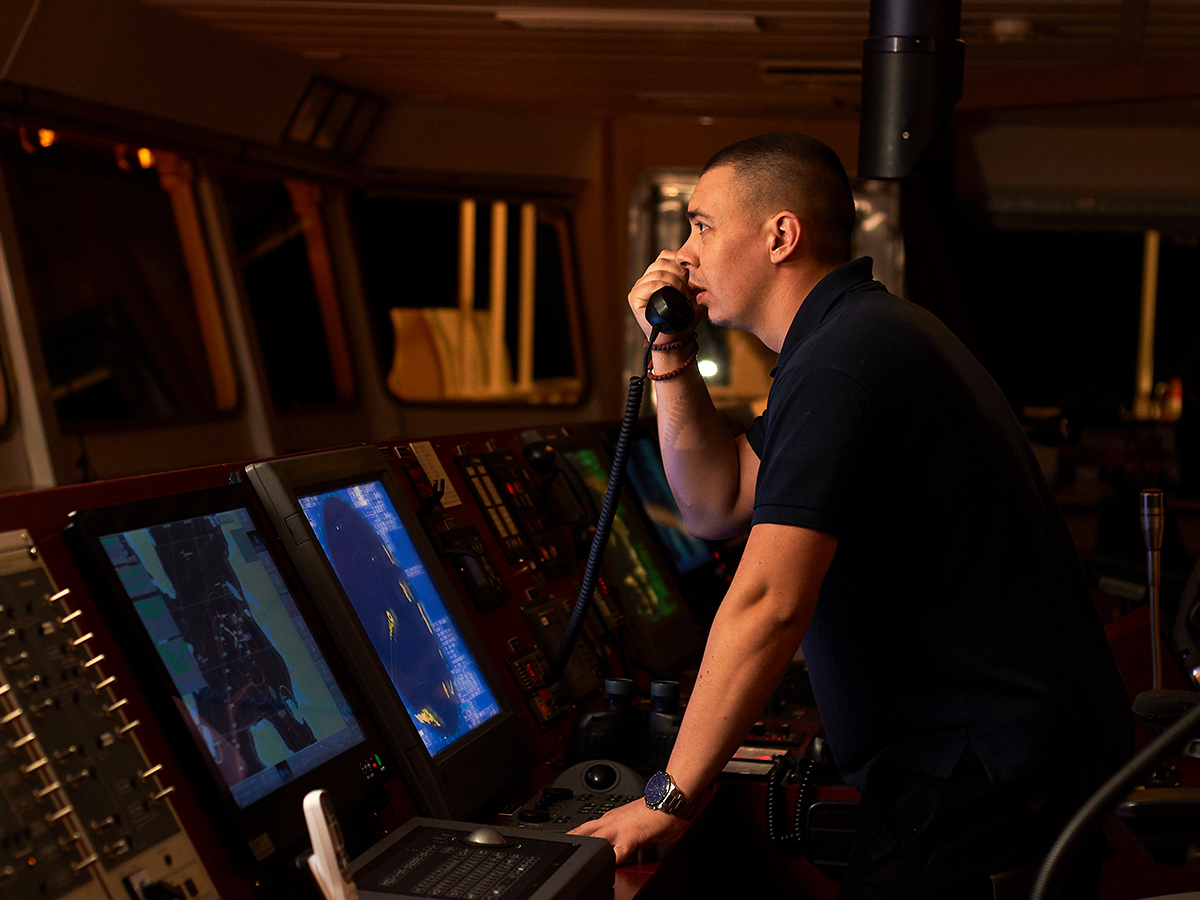Digitalisation offers many opportunities to make ship navigation easier and more efficient. However, the digital bridge also presents the crew with new challenges.
Ship navigation has changed dramatically since Nicholas Rich returned to shore in 1994 after 13 years at sea. Back then, many officers on the bridge still used a pencil, ruler and radar-mounted screen to plot the nearby traffic. But Rich, Group Technical Manager – Systems at Bernhard Schulte Shipmanagement (BSM), based in Cyprus, says walking onto the bridge today is like entering the set from an iconic movie franchise. “I’ve seen navigation equipment that I sailed with on display in Hamburg’s maritime museum. Now you walk onto the bridge and it’s like Star Wars.
“Navigation has become so much more accurate and straightforward in many ways, as officers have an incredible amount of information that guides their decision-making. Today’s navigator uses ARPA (automatic radar plotting aid) and ECDIS (Electronic Chart Display and Information System) to track everything in real time, from their ship’s position and nearby traffic to how the current and tide affects the vessel.”
Increasing Amount of Information is a Challenge

With technology constantly evolving, BSM is constantly developing the training programmes in line with the changing requirements of the digital transformation.
For officers on the bridge, having masses of data at their fingertips can be a double-edged sword. Rich believes the volume of readily available information has made ship navigation incredibly complex. “When I was at sea, we had far fewer instruments and equipment, so we spent a lot of time looking out the bridge window to see what was happening. Now the navigator has multiple different data inputs to deal with at any given time.”
Bringing through a new generation of navigators who were born into a digital world presents another challenge. As Rich points out, today’s youth are more reliant on technology than ever before for study, education, entertainment, socialising with friends or work, reducing their natural tendency to observe what’s going on in the real world. This is a potential challenge for future officers who will be expected to monitor four to five screens while also looking out of the window, to see if the digital information they receive correlates with what is really happening outside the ship.
But newest technology can also be used to support the crew in handling the increased amount of data. As an example, situational awareness tools aim to fuse the available sensor data with camera pictures and sea charts. Smart algorithms can categorize risks and focus the crew’s attention to the most relevant situations. The Schulte Group is participating in this trend with its R&D project “Eye Captain” a custom-developed software currently being piloted.
Technology is Constantly Evolving at an Ever-Faster Pace
Keeping track of regulatory changes is perhaps the biggest obstacle facing officers on the bridge, Rich says. With technology constantly evolving, staying abreast of the latest systems and how they affect the job is getting progressively harder. BSM already takes these challenges into account when recruiting future seafarers and is constantly developing the training programmes in its Maritime Training Centres in line with the changing requirements of the digital transformation. “Ensuring people are up to speed is a huge challenge that, with the scale of change we’re seeing, is becoming tougher each year.”
The upshot is that shipping companies must prioritise training and education for their seafarers – something Rich is aware of having recently worked on the new edition of the International Chamber of Shipping (ICS)’s Bridge Procedures Guide.
In 2021, Rich and other maritime professionals on the ICS Steering Group panel provided expert guidance for topics including the bridge officer’s role and the need to make the ship’s nerve centre a place where people feel they can talk openly.
“We looked at the human element, specifically the need to create an environment where officers are confident about speaking up, asking questions or challenging things in a positive way without being slapped down or ignored,” says Rich who represented the Cyprus Shipping Chamber on the ICS panel.
While updating officers about digital advances on the bridge, the guide also explains technical, complex information in a clear, concise way. “Our intention was to simplify the wording for seafarers, many of whom don’t speak English as a first language,” Rich says. “We’ve limited the vocabulary, using the same terms throughout, and introduced pictograms to make the guide more accessible.”
The sixth edition of the ICS Bridge Procedures Guide has been launched in January. More information can be found on the ICS website.










